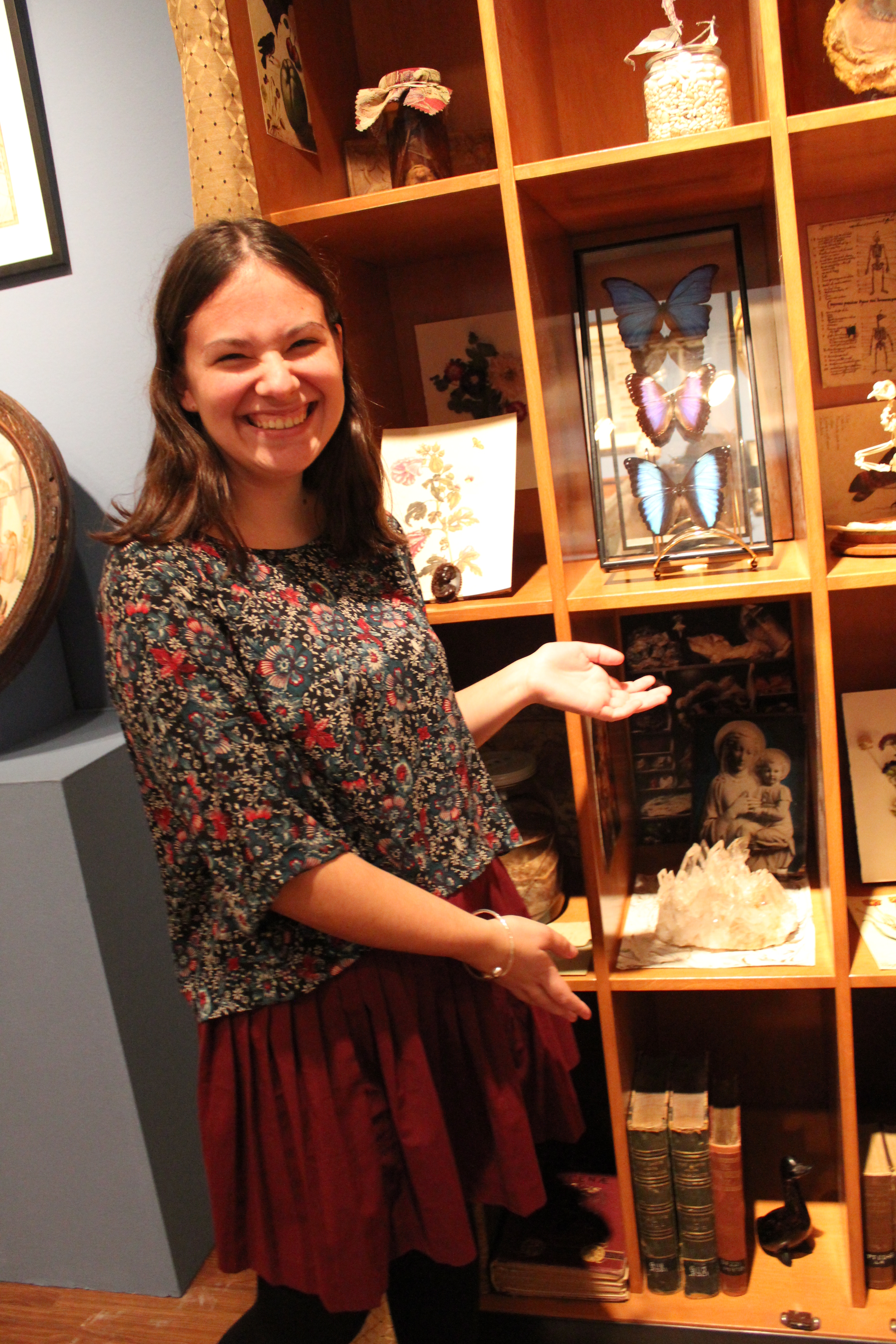By Shannon Zeltmann, Staff Writer
A few days ago, I attended an exhibit opening in Schmucker Art Gallery, but this was a special opening … I was one of the students who got to curate this exhibit. How did I end up working on an exhibit in my first semester of college for a field that I want to go into? Four words: my First-Year Seminar.
In June, I looked through the list of First-Year Seminars and I wanted to take so many of them, but FYS 188 stood out the most – Exploration of the Marvelous: The Art and Science of the Italian Renaissance. I have always loved art history and I plan on doubling majoring in this and history, so when I saw this FYS, I was ecstatic. I could learn more about Renaissance art as well as the science of it, which I did not know a lot about. I got my first choice, and I soon received an email from the professor of the class, Professor Kay Etheridge, that we would be curating an exhibit. I still did not fully understand what I was getting myself into, but I was even more excited by the prospect of creating an exhibit for the class. I figured each one of us would get a piece of Renaissance artwork to curate and that would be the show. I was wrong.
Although there is art in the exhibit, it focuses on one of the curious aspects of humanists during the Renaissance period into the Baroque (about 1400-1700): the wonder room. And what is a wonder room, you ask? A room (or sometimes a cabinet or several rooms) filled with art, religious objects, artifacts from the Americas and Asia, books, plants, mummies, exotic animal parts, “unicorn horns” and other oddities, and a whole list of other staples. But why would humanists want a wonder room? Humanists wanted to understand the entire world in one room as outside of their rooms, the world was exploding with new knowledge with rise classical Greco-Roman ideas, the advent of the printing press, and the age of discovery. Throughout the semester, we learned about the collections scholars, scientists, rulers, and everyday collectors had, each with its own flare. While today we have distinct lines of what science and art are, then humanists crossed this line so many times throughout their studies.
With these things in mind, we worked with the ARTH 284 class, taught by Professor Felicia Else, to create our own wonder room. The ARTH 284 class focused on the artifice that was found in wonder rooms- texts in Latin, paintings, prints, Ming porcelain, and other pieces. The FYS focused on the naturalia- birds, plants, minerals, fish, fossils, man-made synthetic creatures like a phoenix, and other parts of the natural world. We had to come together to create a working exhibit that captured the chaotic mess of these collections, instead of the usual museum exhibit. This meant placing a shark’s jawbone above a print of some classical architecture, scattering coins around fish bones, and numerous other juxtapositions of the same nature.
This also meant countless hours of research. Each one of us had one or two primary objects to focus on. I personally had minerals and digging to find out what humanists used minerals for during the Renaissance led me to some interesting facts about the use of minerals in medicine and in pigments, while still being displayed for their beauty. Each object in the show has some unique story behind it. This research not only led to the creation of a website to catalogue our exhibit, but also to us making audio guides and short synopsis for a catalogue people can use when they look at the exhibit.
Everything came together for our opening. Approximately 180 people came to the reception on Friday, November 10. It was amazing to see all our research into the wonder room era come to this point and the reactions of professors, students, President Janet Morgan Riggs, and others as they step back in time to a point when wonder rooms where people’s means to understanding the world. This was an amazing exhibit to put together, and I still cannot believe I had the opportunity to be one of the curators of this exhibit in the first semester of my first-year.
Here is a link to the wonder room website.
Editor’s Note: This article is the twelfth of our series “Dodging the Bullet: The First Year Journal,” in which The Gettysburgian‘s staff members from the Class of 2021 share stories, reflections, and perspective on their first year experience. You can read the full series here. (BP)


